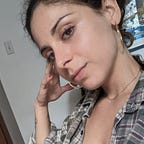Berlin Art Week: ‘What’s next is a secret’
Timo Klöppel
Cubus, Berlin Art Week — 2013, Timo Klöppel from Galerie Kwadrat.
The Art Berlin Contemporary (ABC) Fair opened yesterday with a resounding crescendo, attracting the best of the art world in Berlin. A definite highlight was Galerie Kwadrat’s Timo Klöppel, whose ambitious piece takes a very literal approach to what it means to stand on the brink of “creating”. His work explores the concept of potentials, trying to coin the concentration necessary for the artist to work.
We visited Klöppel in his Lichtenberg studio while the cube is still under construction. It’s huge proportions were already obvious, we stepped into an industrial area to find a hangar, and once inside walls of translucent glass, only to go in and see it mirrored again and again until you reach a tiny central area. The space the cube defines reflects on one’s own mental space and perception, cleaned of particular events or ideas, to express simple potentiality.
“Cubus” was supposed to be even bigger than it is, how important was the size and proportions of its structure?
The size and proportions of the cube are related to human body size, but also to the surrounding room. The work creates a room inside the room and takes the observer into it… At the same time it has to function as a sculpture within the room. Encountering this piece in the context of an exhibition, it creates a repetition of the movement of entering; one gets closer to the work from the outside, and steps inside, to move again into another small space. It’s a cycle that one repeats over and over.
The clean and white colour was an important and defining characteristic. What does the it signify?
White is the color with the most potential. What interests me is to neutralise and separate the materials I use in my works from their own history, so white is the most effective and clean way of erasing their past marks. I can give them the opportunity to become surfaces from which we can project other things. They become separate from their history, their previous uses and shapes.
You previously mentioned the “natural state” of the cube as being in the woods and with transparent windows. How come once exhibited it changes to opaque windows, so that one cannot see in and out of the cube?
This ‘natural state’ is a notion of mine. In the exhibition room it’s not about anything other than this exhibition, rather than about these imaginations. It’s about abstraction: if the walls of the exposition were transparent, the inside and the outside of the room would still remain realistic. But it interests me that these walls should become surfaces on which we can project things; ideas, colours…
In the same way it can characterise potential and purity, could the observer experience the cube as a space of isolation, loneliness, or claustrophobia? Would they be wrong in doing so?
There is no right or wrong. I do not want to control the feelings nor associations of the visitor, it would strike me as rigid and misleading. But all these concepts which you refer to, are those which I associate with it myself.
What implications are there in eliminating the observers’ capacity to see in and out of the cube? Intimacy? Voyeurism? Is the art work defined by it’s observers?
The structure of the cube represents an approach to life for me. We can’t distance ourselves enough to observe it. Once stepping into the small space the cube creates, we lose the perspective we had. This goes on and on, and is forever repeated in our life. What will come next will always remain a secret. There is no beginning nor end.
